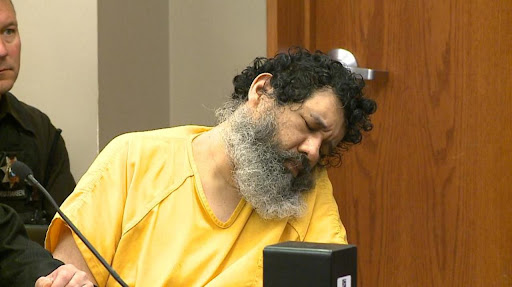Anthony Garcia Quadruple Revenge Murders in Omaha Nebraska
Anthony Garcia once seemed to be on a promising path. A medical school graduate, he aspired to become a successful pathologist. However, his career in medicine took a dark turn when he was terminated from Creighton University Medical Center’s residency program in 2001 for unprofessional conduct and incompetence.
Garcia’s dismissal was overseen by Dr. William Hunter and Dr. Roger Brumback, senior faculty members at Creighton’s pathology department. The decision to fire Garcia was not made lightly but was based on his repeated failures to meet academic and professional standards.
Instead of accepting his dismissal and moving forward, Garcia became consumed with anger and a desire for revenge. Over the next decade, his resentment grew, culminating in a series of heinous crimes that would shock Omaha, Nebraska, and the nation.
The 2008 Murders: A Senseless Attack on Innocents
On March 13, 2008, Omaha police responded to a grisly scene at a home on Davenport Street. Inside, they discovered the lifeless bodies of Thomas Hunter, an 11-year-old boy, and Shirlee Sherman, the family’s housekeeper. Both had been brutally murdered, their throats slashed in a shocking act of violence.
Thomas was the youngest son of Dr. William Hunter, one of the faculty members involved in Garcia’s termination. Investigators believed that Garcia targeted Dr. Hunter by attacking his family. Thomas, a bright and well-loved boy, had been killed shortly after returning home from school. Shirlee Sherman, who worked part-time for the Hunter family, was likely killed after witnessing the attack.
The community was left horrified and grieving. Police struggled to find any immediate leads, as neither Thomas nor Shirlee appeared to have personal enemies. Despite their best efforts, the case went cold.
The 2013 Murders: A Chilling Connection
Five years after the 2008 murders, Omaha was rocked by another horrific crime. On May 12, 2013, Dr. Roger Brumback and his wife, Mary Brumback, were found murdered in their home. Like Dr. Hunter, Dr. Brumback had played a role in Garcia’s dismissal from Creighton University.
Dr. Roger Brumback was shot and stabbed, while Mary was fatally stabbed multiple times. The couple had been preparing to sell their home and relocate when Garcia struck. This brutal attack mirrored the violence seen in 2008, prompting investigators to re-examine the earlier murders.
Detectives soon uncovered a chilling connection: both the Hunter and Brumback families were tied to Garcia’s time at Creighton University. The seemingly random attacks now appeared to be part of a revenge-driven plan to punish those Garcia held responsible for his professional failures.
The Investigation: Piecing Together the Evidence
The investigation into the 2008 and 2013 murders gained momentum after the Brumback killings. Detectives revisited the Hunter-Sherman case, looking for links between the victims and potential suspects. Garcia quickly emerged as a person of interest due to his connection to both Dr. Hunter and Dr. Brumback.
Key pieces of evidence began to surface:
- Cell Phone Records: Garcia’s phone records placed him near the crime scenes at critical times.
- Firearm Evidence: The gun used to shoot Dr. Brumback was traced back to Garcia, who had purchased it in the months leading up to the murder.
- Behavioral Indicators: Acquaintances of Garcia described him as increasingly bitter and obsessed with getting revenge on those he blamed for his failed career.
Garcia’s erratic behavior also raised red flags. In July 2013, police arrested him during a routine traffic stop in Illinois. He appeared intoxicated, and officers discovered a handgun and other items in his vehicle. His arrest marked the beginning of the end for his violent spree.
The Motive: Revenge for a Professional Grudge
Garcia’s motive was deeply rooted in revenge. He believed that his termination from Creighton University had ruined his career in medicine and held Dr. Hunter and Dr. Brumback responsible. His hatred was so consuming that he targeted not only them but also their loved ones.
The randomness of his victims — an 11-year-old boy, a housekeeper, and a retired couple — underscored the depth of his anger and disregard for human life. Investigators concluded that Garcia’s acts were calculated and deliberate, driven entirely by his need to settle perceived scores.
The Trial: A Case of Cold-Blooded Murder
In 2016, Anthony Garcia went to trial for the murders. Prosecutors presented a compelling case, arguing that Garcia’s crimes were acts of premeditated revenge. They laid out a timeline of events, supported by:
- DNA evidence linking Garcia to the crime scenes.
- Testimony from former colleagues and acquaintances detailing his deep-seated resentment.
- Records showing Garcia’s purchase of the firearm used in the Brumback murders.
The defense argued that Garcia’s actions were the result of untreated mental illness, but the jury was unmoved. In October 2016, Garcia was convicted of four counts of first-degree murder.
The Sentencing: Justice for the Victims
In 2018, Garcia was sentenced to death, becoming one of the few individuals in Nebraska to face the death penalty in recent years. During sentencing, the families of the victims shared emotional statements about the devastating impact of Garcia’s actions.
The judge described Garcia’s crimes as cold, calculated, and senseless, emphasizing the lack of remorse he showed throughout the trial. For the families of Thomas Hunter, Shirlee Sherman, and Roger and Mary Brumback, the sentence provided some measure of justice, though it could never undo the pain of their loss.
The Aftermath: A Community Changed Forever
The murders committed by Anthony Garcia left an indelible mark on Omaha, Nebraska. The randomness of the attacks and the targeting of innocent victims highlighted the devastating consequences of unchecked resentment and mental instability.
The case also underscored the importance of addressing grievances and mental health issues before they escalate into violence. Garcia’s story serves as a cautionary tale about the dangers of unresolved anger and the need for early intervention.
For the families of the victims, the pain of their loss continues to be a daily reality. They remember Thomas, Shirlee, Roger, and Mary not for the tragic way they died but for the joy and love they brought to those around them.
Final Thoughts
Anthony Garcia’s crimes remain a chilling reminder of how resentment and obsession can drive a person to commit unthinkable acts. While justice has been served, the tragedy of these murders will forever linger in the memories of those who knew and loved the victims.
If you or someone you know is struggling with anger or mental health issues, seek help immediately. Resources like the National Alliance on Mental Illness (NAMI) and local counseling services are available to provide support.
Discover more from City Towner
Subscribe to get the latest posts sent to your email.




